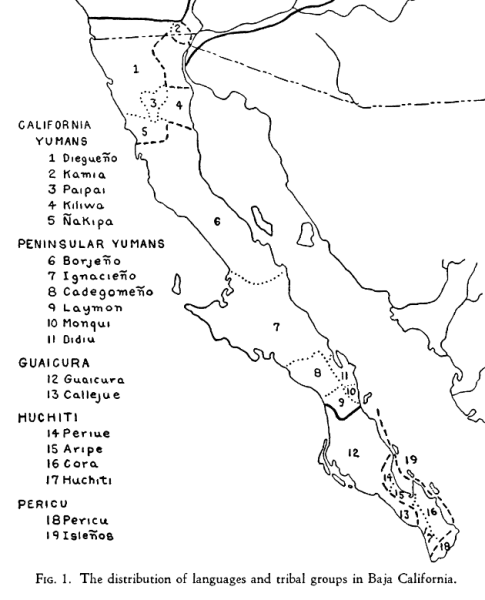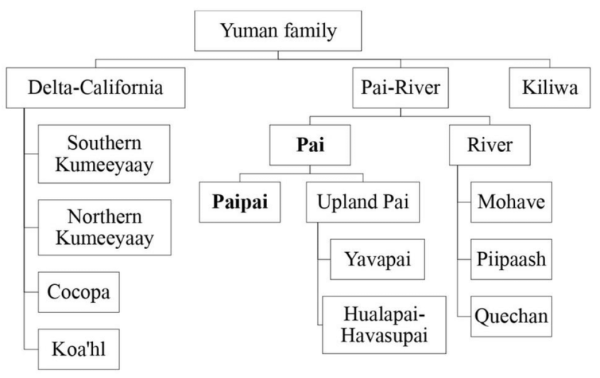The Baja California Peninsula is the region that is bounded by the Pacific ocean and the Gulf of California, which separates it from mainland Mexico. Politically, it borders California and the southwestern-most tip of Arizona in the north and Sonora to its northeast. Being split between the Mexican States of northern Baja California and Baja California Sur, the primary language of the area is Spanish. However, there are various lesser-spoken languages belonging to the Yuman-Cochími language family within the broader Hokan language family that may be veiled by the grand curtain of extinction.

The region had been inhabited by only indigenous peoples for hundreds of years until Spanish conqueror Hernán Cortés arrived in what is now La Paz on May 3, 1535, attempting to found a colony shortly after (indigenousmexico.org). Although there were frequent attempts to control the land, the conflicts with the indigenous population combined with the unpleasant geography delayed any permanent settlements to develop until 1697, when Loreto was established by Padre Juan María Salvetierra. Over time, regional conflicts and foreign diseases decimated the population. Unfortunately, this led to some languages such as Cochími slowly phasing out of use in the early 20th century. Unlike Cochími, there are numerous languages and populations that still exist.
The populations still exist today, although their numbers are waning and those who speak their languages are disappearing in number. In terms of documentation, outsiders have been recording and collecting data about these languages since the founding of Misión de Nuestra Señora de Loreto Conchó.

Although the existing Yuman languages all have fluid speakers, the majority of them are older adults, with Spanish being the vastly dominant language in use by most youth, threatening the future of minority languages. One example of an endangered indigenous language is Paipai. The Paipai are an indigenous tribe residing in mountainous and arid regions of northern Baja California Peninsula in the municipality of Ensenada. In 1970, there were 236 native speakers of the Paipai language (Scheffler, 1992). Now classified as Severely Endangered by the UNESCO Atlas of the World’s Languages in Danger, the language had a mere 193 as of 2010. Paipai still has a number of speakers, but it is in decline due to the fact that it is not known to be taught in any school and that most speakers are over the age of 50. The language, like all others here, pertains to the Yuman language family, specifically within the Pai branch. This is the same branch that includes the Yavapai, Hualapai, and Havasupai languages spoken by the respective peoples in western Arizona.
One of the more known Yuman languages is Kumeyaay, a language which has an estimated 60 fluent speakers within the entirety of Baja California (elararchive.org). This, like most other languages, stems down to Spanish as a more-utilized language between children and adults. Kumeyaay is a part of the Delta-California branch and is unique in comparison for several reasons. Unlike Paipai, Kumeyaay has a few revitalization programs in addition to Kumeyaay Community College and Cuyamaca Community College in California.

en.wikipedia.org
Kiliwa is another Yuman language spoken by the Kiliwa people in the northwest peninsula. The linguistic census over different years has made the true number of fluent speakers nebulous. A 2008 report on numerous tribal languages concluded that Kiliwa had a speaking population of five (sandiegoarchaeology.org), but according to verazinforma.com, there were only 4 fluent speakers left in 2023. These numbers starkly contrast to the inflated 76 speakers as seen in 2020 (cuentame.inegi.org.mx). It is by far one of the languages closest to extinction in terms of fluent speakers, with very few speakers. Serious efforts have gone into the attempted revitalization of the dying language and it has garnered much attention by the Mexican press (sandiegoarchaeology.org).
All of these languages have features that are unique from other languages in the sense that they demonstrate how geographic borders and linguistic divergence affect the status of a language throughout time. These languages have only recently been once again researched in an attempt for us to gain insight on the languages and save as much as we can. With the use of online dictionaries, audiofiles, seminars and websites dedicated to the revitalization of such languages, it is still possible to prevent these languages from having the same fate as Cochími.










